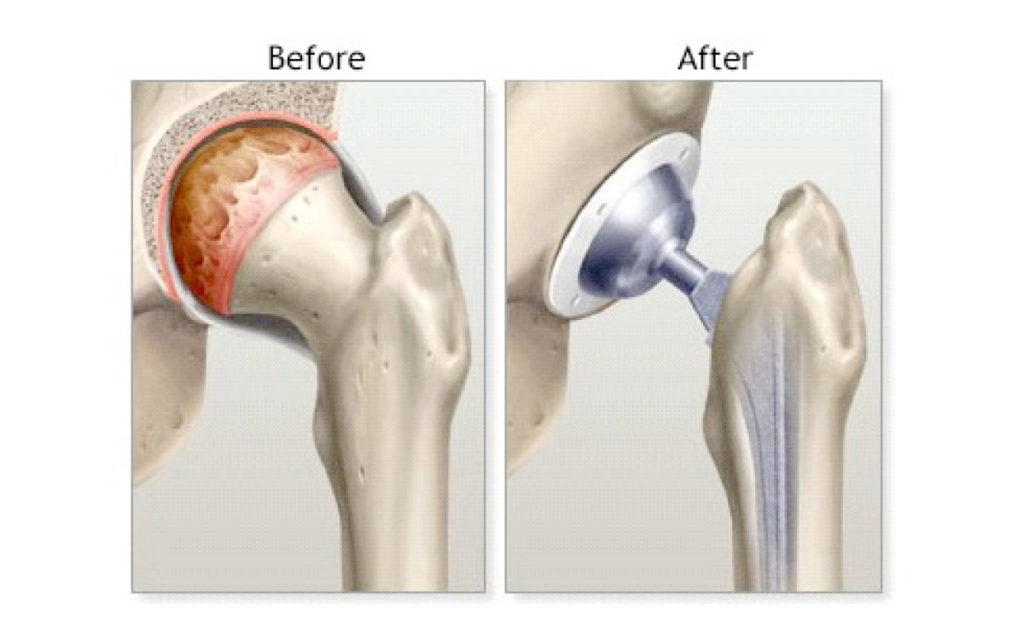
Adaptive Equipment Needed After Hip Replacement Surgery For Seniors
The human hip are complex joints that are responsible for numerous movements and positions in our daily lives. Some of which we don’t even realize until we lose hip function or range of motion due to an injury and certain surgical procedures.
Total hip arthroplasties (THA) have become more and more refined given the ever-advancing medical technology in the United States. The post-surgical results can be very rewarding and life-changing for individuals who would otherwise live with the dysfunctional consequences of deteriorating joints and arthritic joint pain. Of course, the post-surgical healing period can be lengthy (up to 12 weeks) and comes with a handful of temporary movement precautions in order to prevent joint dislocation, hardware failures, or infection. There are 3 types of total hip incisions to be aware of.
Three Types of Surgical Approaches to Total Hip Replacement:

Posterior: This is where the surgeon enters through the back of the joint and the surgical incision lines to the back of the hip above the buttocks. Posterior hip replacements come with more movement restrictions including: no bending forward at the hips past 90 degrees, no pivoting in place on the operative leg, no sitting with the knees above the hips, avoid walking backwards as much as possible, keep toes forward or slightly out with walking, and no crossing of the legs.
Lateral: The healing period for a lateral incision can also be up to 12 weeks and is made on the outer side of the hip. Movement precautions include not bending forward at the hips past 90 degrees, avoid bringing the thighs together, and avoid rotating the hip inward.
Anterior: The incision is made on the front of the hip above the quadriceps of the thigh. Anterior hip replacements have grown to be more popular because incisions are less invasive and post-surgical healing requires fewer movement restrictions. Many doctors find that posterior hip precautions are not necessary for direct anterior hip replacements. Patients should be careful when walking backward with a walker by leading with the non-operative foot in order to not rip open the stitching.
Precautions can vary per patient depending on how the operation went, but for the most part, patients are allowed to place as much weight through their leg as they can tolerate relatively soon after surgery. If patients do not own a walker, they will most likely be provided a standard walker with no wheels by the hospital. Patients can use rollators but need to be educated in how using one changes after total hip replacements.
During the post-operative phase a patient’s hospital stay, it’s common to receive a visit from physical and occupational therapists who will have home equipment suggestions to better assist a patient in maintaining their movement precautions. Here are some of the following equipment recommendations.
Adaptive Equipment Recommendations For Post Hip Replacement Surgery:
Hip kit: The traditional hip kit comes in a long plastic bag filled with the following items: shoehorn, reacher, dressing stick, a long-handled sponge, and a sock-aid. All items provide extra length in order for the patient to better reach their feet and lower legs for washing and dressing tasks.
Unless the patient has a dedicated caregiver who is willing to assist them with lower leg activities every day, it is essential that a patient receive and be educated in using a hip kit in order to avoid excessive bending. Patients with anterior hip replacements may not have to use the kit unless their doctor specifically recommends “no bending past 90 degrees” precautions.
[amazon bestseller=”hip kit for total hip replacement” items=”1″]
Shower chair: Shower chairs aren’t required for patients after hip replacement surgery because most individuals are allowed to stand during bathing tasks. However, shower chairs make life so much easier because standing for prolonged periods after hip surgery is tiring, painful, and dangerous on a wet surface. Shower chairs should have arm-rests and adjustable height options to ease transfers. Individuals with poor sitting balance may opt for a shower chair with a back support.
[amazon bestseller=”shower chairs for elderly” items=”1″]
Bedside commode: Walking reasonable distances daily is recommended after hip surgery. However, some patients may have already had walking limitations prior to surgery due to other health problems. For patients who will inevitably struggle with walking to and from the bathroom for longer periods, a bedside commode might be a safe, temporary option in order to avoid falls and extreme fatigue. The commode should be height-adjustable and have arm-rests, similarly to a shower chair in order to better assist with safe sit-to-stand transfers.
[amazon bestseller=”bedside commodes for seniors” items=”1″]
Toilet riser: A toilet riser should be a necessary household item after any type of hip replacement. Toilet risers are clipped onto the toilet bowl in order to give the user a few more inches of lift to maintain the “knees below the hips in sitting” precaution. Toilet risers can be just the clip-on feature or can include arm-rests.
[amazon bestseller=”hip replacement raised toilet seat” items=”1″]
Armrests are recommended for people who don’t have grab bars or a stationary counter next to the toilet to push off of. Some individuals choose to slide their commode over the toilet, which is fine if there is enough height and if the commode will fit in the bathroom.
Summary:
Consult with your doctor about specific movement precautions that you will be expected to follow after surgery. That way, you’ll have a better idea about what equipment is necessary and what equipment is too excessive.
Talk to your occupational & physical therapist about multiple equipment store options. Adaptive equipment such as hip kits, toilet risers, and shower chairs are NOT typically covered by insurance because they are not considered “medically necessary” items. Research in-store and online prices like Amazon to locate equipment that best fits your budget and your functional needs.

Comment ( 1 )
[…] quick to forget the rule once they lean forward to grab their pants off of the floor. Remember to use a reacher stick or a dressing stick to retrieve your clothes or keep your pants or lower dressings close to your knees to prevent excessive […]